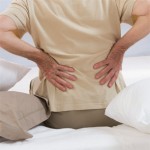Another study evaluated epidural corticosteroids for spinal stenosis in a retrospective subgroup analysis.2 There was no improvement in outcome with an epidural steroid injection, whether patients were treated surgically or nonsurgically. The injections were associated with significantly less improvement at four years among all patients, as well as longer duration of surgery and a longer hospital stay.
Dr. Borenstein noted that additional research is needed to determine the efficacy of epidural injections for spinal stenosis and herniated discs. “I don’t think we have the final answer, but we have to think about it in this older population, about whether doing this corticosteroid injection is, in fact, in their best interest.”
A number of studies have examined whether an artificial disc could be as effective as fusion or nonoperative therapies. Although some research has indicated that patients have a good outcome over a two-year period, the results have been no better long term than nonsurgical therapy, Dr. Borenstein said. There are several contraindications to disc replacement and potential toxicities.
Nonsurgical Therapies for Back Pain
Dr. Borenstein reviewed current information about the efficacy of several nonsurgical therapies for low back pain:
- Exercise: Although there are multiple forms of exercise, exercise in general has been associated with pain relief and improved function in a number of large studies.
- Massage: Massage therapy is passive therapy, but it has been associated with pain reduction and improved function, and “patients love it,” Dr. Borenstein said.
- Acupuncture: Some experts argue that this may be a placebo-type therapy, but a number of studies have found an association between acupuncture and pain relief and improved function.
- Back schools: Providing patients with education about the anatomy of the back, biomechanics, optimal posture, ergonomics, and exercise can have significant value, particularly when the instruction is conducted in an occupational setting.
- Cognitive behavioral therapy: This type of therapy can provide short-term significant pain relief for patients with fibromyalgia or chronic back pain, but the effectiveness is relatively mild and there are limited options available for this type of therapy.
- Spinal manipulation: The effect is relatively mild to none, with no benefit when compared with sham therapy.
- Transcutaneous electrical nerve stimulation (TENS): The effectiveness has not been determined. One randomized controlled trial found that TENS provided better pain relief than placebo; another found no improvement.
- Lumbar corsets: No studies have compared this therapy with sham therapies. One trial identified an adverse effect with lumbar corsets due to weakening of the paraspinal muscles. Lumbar corsets should be used for only a short period of time in specialized groups.
